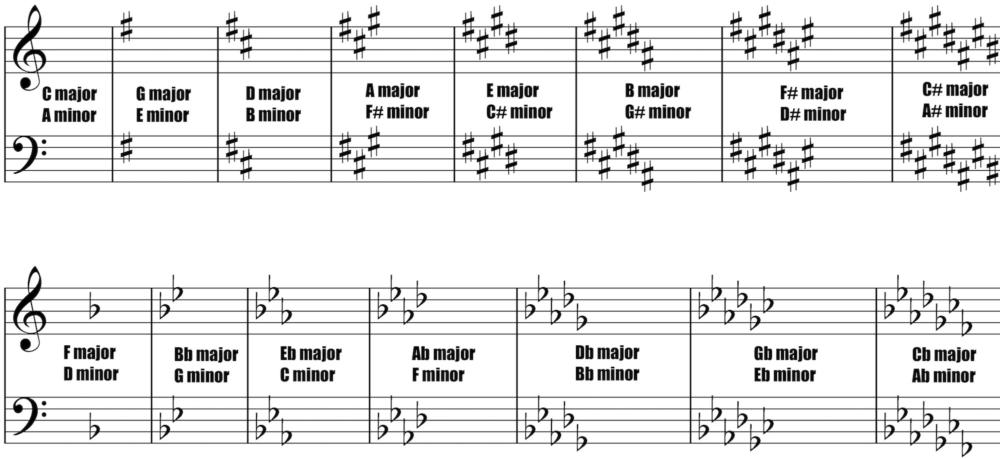A (music) note is a symbol and a name for a tone – a sound/frequency – we hear when this note is played on an instrument.
There are loads of sound frequencies. Only some of which we (humans) can hear. Between 20Hz – 20.000Hz (Hz is the number of waveforms per second) for most people. Music uses only a few of these frequencies with strong mathematical relations (ratios).
Twelve unique notes are used in most Western – as in a region of the world, not as in Country & Western – music, and each of these notes can be used as a point of reference for a music composition.
The base consists of seven notes – a,b,c,d,e,f,g – the white keys of the piano keyboard, complemented by five notes that are in between these seven (the black keys), with names deriving from those original names; like ‘a flat’ or ‘c sharp’.
When for example note ‘c’ is used as a point of reference, we say the composition is written in the ‘key’ of C. In other words, note C is the point of reference and can be used as a ‘key’ to ‘decipher and unlock’ the other notes in that composition.
There are twelve different keys in the Western Tonal System* and each key uses one of the twelve unique notes of the system as a point of reference.
* the system behind the music of Bach, Bernstein and Beatles for example. In other words, Western classical and popular music, including jazz!
The point of reference for the key of C major is not only the note ‘c’ but its major scale – a sequence of notes – as well. The scale of C major = c,d,e,f,g,a,b. It’s the famous “do-re-mi-fa-so-la-ti” sequence. However, we tend to prefer ending on the first note of the next sequence. The next ‘c’ or ‘do’. Like ending a week on the next Monday. It just doesn’t feel complete without. Just listen to this.
In the picture at the bottom of this page you’ll see the major keys and their accidentals – sharps ‘#’ or flats ‘b’ used to raise (#) or lower (b) notes by the smallest distance in The Western Tonal System: a semitone – along with minor keys with the same accidentals.
‘A minor’ is the parallel minor key of ‘C major’ because they have the same kind and number of accidentals; zero of any kind in the case of these two keys. Two keys using the same notes, one major key and one minor, are known as relative keys.
Major & minor
The difference between major and minor lies in the distance between the first note – of the key, chord (harmony – multiple notes sounding simultaneous) or scale – and the third.
Without overcomplicating things, in major this distance is bigger than to be mathematically expected (our brain uses math, in this case symmetry to spot this). This gives major keys a open, sharp, almost tart character. In minor the distance is smaller than expected. This gives minor keys a sad, mellow, dark character.
The soundbite below lets you hear the distance (‘interval’ is the musical expression for distances between notes) between the first and the third of major versus minor.
Key signature
The key is indicated by the key signature. This is the number of accidentals; often but not exclusively found on the left side of a ‘bar system’: a line of bars. Bars are indicated by the vertical lines dividing the five parallel horizontal lines that indicate the height (in frequency) of notes. In the picture below you can see what they all look like.


